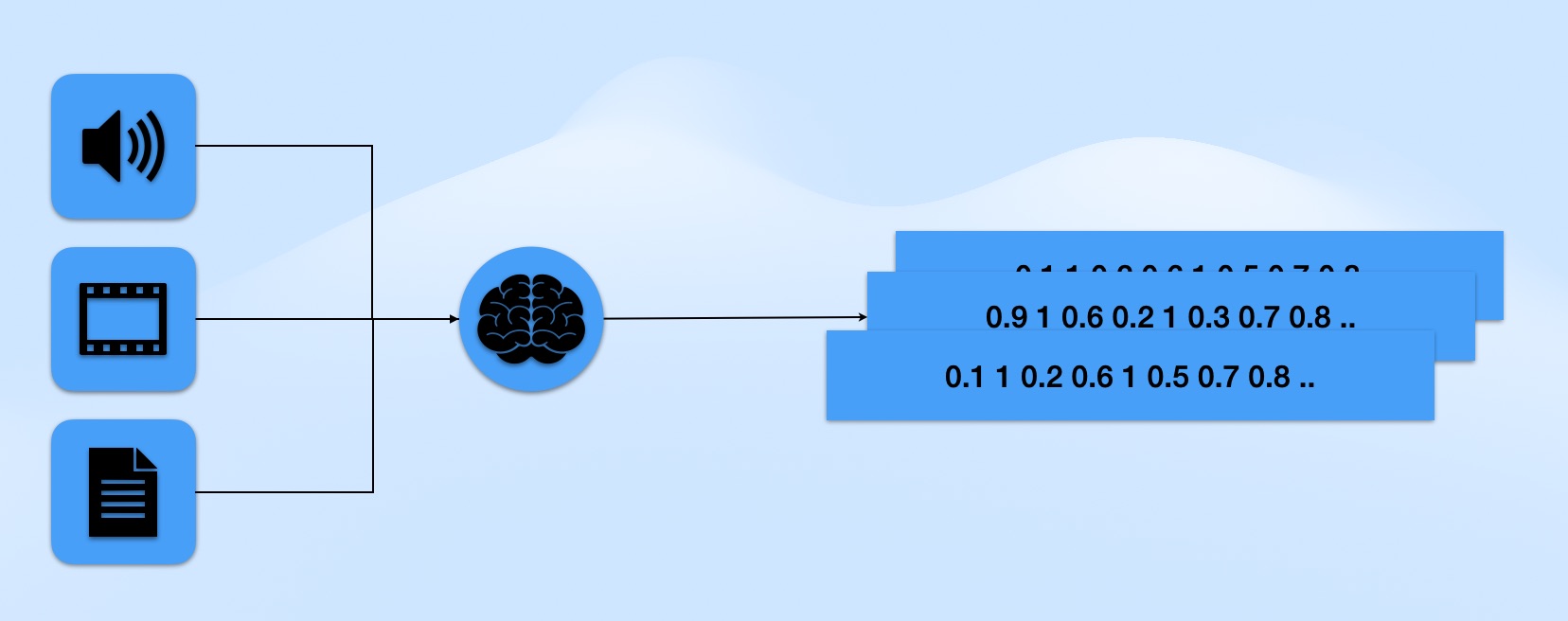Have you ever wondered how a computer can understand what you’re saying, find faces in pictures, or know what song is playing? The answer is a very important idea in AI: vectorization.
Basically, vectorization is the process of turning things like text, pictures, and sounds into numbers. Think of it like a translator that turns the messy, real world into a simple language that computers can understand. This process is the first step for almost any AI task.
📝 Turning Text into Numbers
To understand human language, a computer needs to turn words into numbers.
- How it works: There are different ways to do this. Some simple ways look at how often a word is used. More advanced ways, like Word2Vec and BERT, learn how words are related to each other by reading a lot of text. In this number world, words with similar meanings (like “king” and “queen”) are closer together than words that are not related (like “king” and “car”).
- What it’s used for: Search engines, tools that can tell if a review is positive or negative, and spam filters all use this.
🖼️ Turning Pictures into Numbers
To a computer, a picture is just a bunch of colored dots (pixels). Vectorization turns these dots into a set of numbers that describes what’s in the picture.
- How it works: A simple way is to just list all the colors of the dots in a long line. But a better way is to use a smart AI that has already looked at millions of pictures. This AI can create a set of numbers that describes the things in the picture. For example, the numbers for two different pictures of a cat would be very similar.
- What it’s used for: Searching for pictures that look similar, finding objects in pictures, recognizing faces, and looking at medical scans.
🎵 Turning Sounds into Numbers
Sound is a wave. To understand it, a computer needs to turn this wave into numbers.
- How it works: The computer takes samples of the sound at different times. From these samples, it can create a picture of the sound called a spectrogram. This shows all the different frequencies (high and low sounds) in the sound.
- What it’s used for: Recommending music, voice assistants like Siri and Alexa, and apps like Shazam that can tell you what song is playing.
🎬 Turning Videos into Numbers
Video is the most complicated because it’s a bunch of pictures with sound.
- How it works: To turn a video into numbers, a computer uses a mix of tricks. It turns each picture in the video into numbers, and it turns the sound into numbers. Then, it uses a special kind of AI that can understand how things change over time to understand what’s happening in the video.
- What it’s used for: Recommending videos, finding bad content, and understanding what’s happening in sports games.
✅ Why is This So Important?
Vectorization is like a bridge between our world and the world of computers. Without it, computers couldn’t understand text, pictures, sounds, or videos. By turning everything into numbers, we can:
- 🔍 Find similar things: Find articles that are about the same topic, pictures that look the same, or songs that have the same style.
- 📊 Group things together: Put similar things in the same group without being told what the groups are.
- 📝 Label things: Automatically figure out what a piece of text, a picture, or a sound is about.
- 🤖 Build smart AI: Create everything from chatbots to self-driving cars.
🚀 The Future of Vectorization
Scientists are always working on new and better ways to turn things into numbers. As this technology gets better, we will see even smarter AI that will change the way we live and work.
